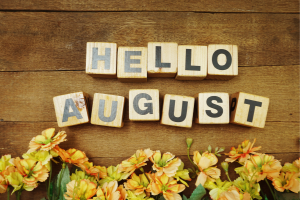Ultimate Guide: 10 Essential Tips for First-Time Home Buyers
 🏠Introduction 🏠
🏠Introduction 🏠
Buying your first home is an exciting and significant milestone. However, navigating the complex process of purchasing a property can be overwhelming for first-time home buyers. To help you make informed decisions and ease the journey, here are ten essential tips that will guide you through the process.
1. Determine Your Budget
Before you start browsing listings, establish a clear budget. Consider your monthly income, expenses, and potential mortgage rates. Use online calculators to estimate how much you can afford without stretching your finances too thin.
2. Get Pre-approved for a Mortgage
Getting pre-approved for a mortgage gives you a clear idea of the loan amount you qualify for. This helps you narrow down your home search and shows sellers that you’re a serious buyer.
3. Research Neighborhoods
Explore different neighborhoods to find the one that suits your preferences and lifestyle. Consider factors like proximity to work, schools, amenities, safety, and future development potential.
4. Prioritize Your Needs
Make a list of your must-have features in a home, such as the number of bedrooms, bathrooms, yard space, and layout. Differentiate between needs and wants to avoid compromising on essentials.
5. Work with a REALTOR®️
A qualified real estate agent can be invaluable in navigating the housing market. They have local expertise, negotiation skills, and can help you find homes that match your criteria.
6. Conduct Thorough Inspections
Once you’ve found a potential home, invest in professional home inspections. This can reveal hidden issues that might affect your decision or provide negotiation opportunities.
7. Factor in Additional Costs
Remember that the purchase price is just one part of the cost. Account for property taxes, homeowners association (HOA) fees, insurance, maintenance, and potential renovations when budgeting.
8. Negotiate Wisely
Don’t hesitate to negotiate on the purchase price. Your realtor can guide you through this process, helping you secure the best deal possible.
9. Understand the Contract
Read and understand the purchase contract thoroughly before signing. If you’re unsure about any clauses or terms, seek legal advice to ensure you’re making an informed decision.
10. Be Patient and Flexible
Finding the perfect home can take time. Be patient and open to adjusting your expectations. Don’t rush into a decision you might regret later.
🏠 Conclusion 🏠
Buying your first home is both a financial investment and an emotional journey. By following these ten essential tips, you’ll be better equipped to navigate the process with confidence and make a decision that aligns with your long-term goals. Remember, seeking advice from professionals and experienced homeowners can provide valuable insights as you embark on this exciting adventure.


 Facebook
Facebook
 X
X
 Pinterest
Pinterest
 Copy Link
Copy Link

 As the dog days of summer roll in, August provides homeowners with a golden opportunity to perform essential maintenance tasks that will safeguard their property and prepare it for the upcoming seasons. Whether you’re a seasoned homeowner or new to the responsibilities of maintaining a house, this blog post will serve as your go-to guide for tackling crucial tasks this August. By taking proactive steps, you can ensure your home remains in excellent condition and save yourself from potential headaches down the road.
As the dog days of summer roll in, August provides homeowners with a golden opportunity to perform essential maintenance tasks that will safeguard their property and prepare it for the upcoming seasons. Whether you’re a seasoned homeowner or new to the responsibilities of maintaining a house, this blog post will serve as your go-to guide for tackling crucial tasks this August. By taking proactive steps, you can ensure your home remains in excellent condition and save yourself from potential headaches down the road.


 When it comes to designating a room as a bedroom, there are certain legal requirements that must be met to ensure the safety, comfort, and habitability of the space. These requirements vary from jurisdiction to jurisdiction, but there are some common criteria that are often considered in determining whether a room can be legally called a bedroom. In this blog post, we will explore these criteria and provide you with a comprehensive understanding of what is legally required to call a bedroom a bedroom.
When it comes to designating a room as a bedroom, there are certain legal requirements that must be met to ensure the safety, comfort, and habitability of the space. These requirements vary from jurisdiction to jurisdiction, but there are some common criteria that are often considered in determining whether a room can be legally called a bedroom. In this blog post, we will explore these criteria and provide you with a comprehensive understanding of what is legally required to call a bedroom a bedroom.



